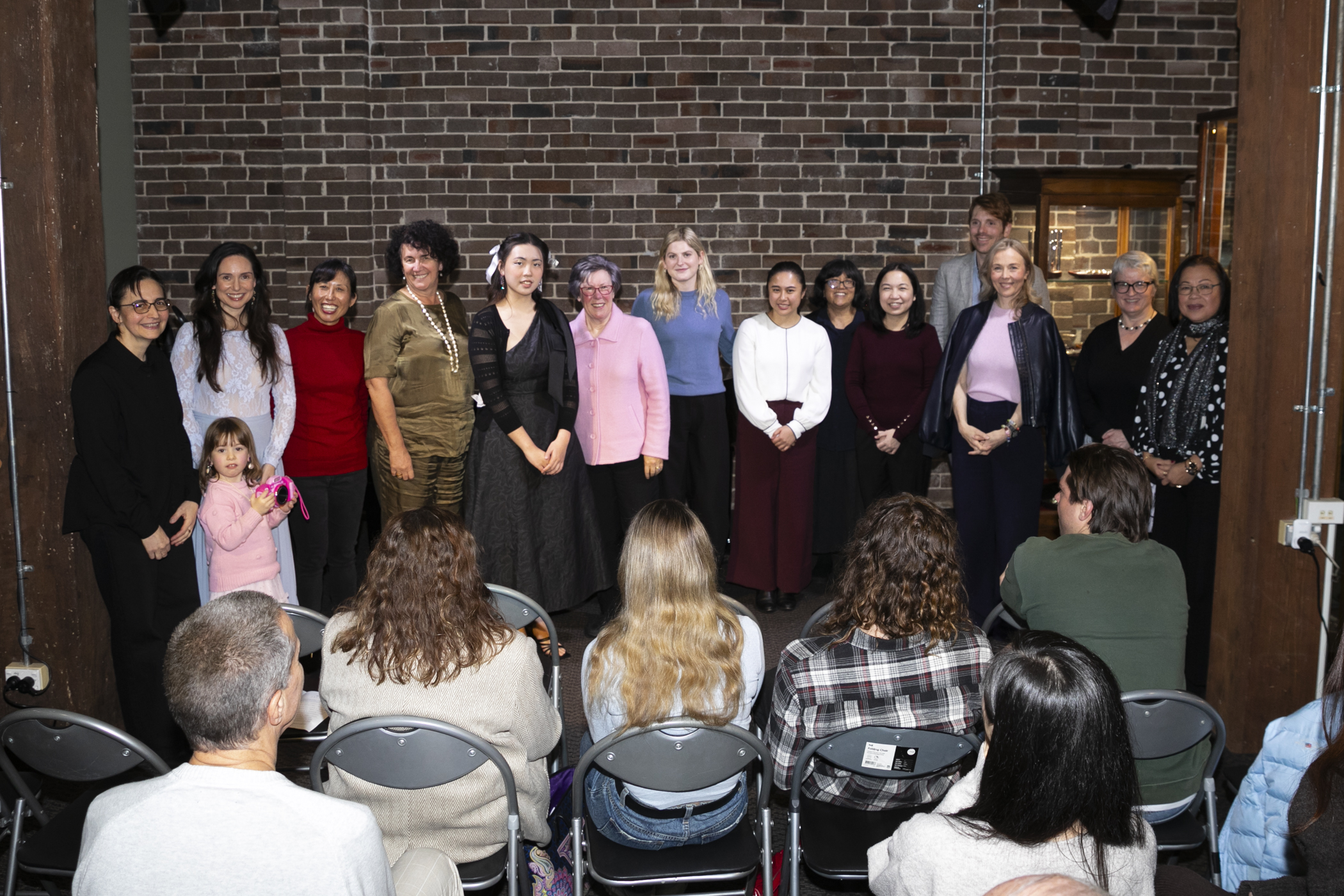Get it off your chest: the emotional benefits of a strong chest voice
Why do you enjoy singing? Is it to showcase your vocal skills? To challenge yourself to stand up and be heard?
One reason, I’ll bet, is for the joy of expressing yourself and interpreting the emotions of a song that resonates with you.
To do that skillfully, you need the full use of your entire vocal range: head voice, middle and chest register. ![]()
Here, we’ll look at why developing a strong chest voice is important for connecting to the emotions of a song, and how to achieve it.
How do you know when you’re using your chest voice?![]()
![]()
![]()
In women, the average chest voice range is from E above middle C to G below middle C.![]()
In men, it can be taken up to middle C, and higher in some cases.
For an idea of where your chest voice sits, place your hand on your chest and speak in your normal register and volume. As you speak, you will feel vibrations beneath your hand. This is the general pitch of your chest voice.
One thing to note is that chest voice and belt voice are not the same thing. While you do use chest voice in belt singing, the difference is you also use higher notes. Belt singing requires very forward sounds in your upper-middle range and needs particular practice. So, belt is not pure chest voice, it a mixture of weights and sounds in the middle range of the female voice.
Why develop a stronger chest voice? ![]()
Basically, you need a strong chest voice to sing most songs, as most compositions have a middle C in them. For women middle C is in chest voice and for men it’s at the border of chest and head voice. So, a well-developed chest voice is essential for all singers.
Emotions-wise, songwriters like to paint pictures with words and where the melody of a song goes. One example is ‘Dream a Little Dream of Me’. For the lyrics, Stars fading, but I linger on dear, the voice starts high on ‘stars’ and ends low in the chest on the words ‘linger on dear’, painting with vocal registers an emotional picture of the singer’s feelings.
More composers and lyricists expect singers to have access to their entire vocal range, because it offers colours that match emotions and storytelling through song – a major reason why we sing!
![]() One student learns to smooth transition from head to chest voice
One student learns to smooth transition from head to chest voice![]()
![]()
![]()
 One of my students, Gina Cohen, has a naturally strong lower register and healthy belt voice, but needed to work on smoothly transitioning between middle register to chest. Before we worked together, Gina says, “I used to get a sore, scratchy throat, as I used my throat to control the note. Transitioning was hard without getting that yodel effect”.
One of my students, Gina Cohen, has a naturally strong lower register and healthy belt voice, but needed to work on smoothly transitioning between middle register to chest. Before we worked together, Gina says, “I used to get a sore, scratchy throat, as I used my throat to control the note. Transitioning was hard without getting that yodel effect”.
We’re working on her favourite songs to help her smooth out her transition between registers. Often, we’ll pick out a couple of bars from a song and use the music as a chest voice exercise.
Gina is working on two songs requiring a strong chest voice, and a little belted quality: ‘No Time at All’, from Stephen Schwartz’s Pippin, and ‘As if We Never Said Goodbye’, from Andrew Lloyd Webber’s Sunset Boulevard. Both are sung by older women, who have character and experience. Gina has really worked on using an easy, rich chest voice, and can bring in the brighter projected quality at the climatic points in each song.
“Now my transitions are much smoother. It’s mostly the way you think about it and physically set it up before producing a sound. The more I prepare and set my body up, the more effortless it is to sing chest and transition,” Gina observes.
“My sound is smoother and more pleasant to listen to! I still lapse back into old habits, however, I’m now aware of these and can adjust. Now, I can sing for longer periods of time, and I’ve increased my repertoire. I always wondered how professional singers could sing those huge songs night after night, however I have discovered good technique is the key. Now I can focus more on the meaning of the song, rather than just getting the sound right.”
Exercises for a stronger chest voice
- Beginning at middle C (or C below middle C for men), sing down five notes to F. Let your voice find a chest feel without pushing, or using too light a sound. Go up and down the keyboard in steps. Major scales are fine. Extend this exercise by starting about G below middle C and going five notes up/five notes down in one flowing sound, using your chest voice.
- Starting on F below middle C, sing up three notes, down two. Use a vowel, or syllable starting with a consonant like N. Work up to E above middle C and back again. Find a thickish, full-bodied sound with a bit of weight. Repeat three times. On the second go, lighten the weight slightly, about 30% less. Then on the third go, lighten the weight by about 50%, finding a light chest voice quality, again for three to four turns. After you have found where your chest voice can move, try using different weights for each turn of this easy exercise. Listen carefully and notice what you feel. Is the sound quality hazy? Then you need to use a little more breath support. Is the sound quality overly harsh? Then try rebalancing the weights and feel in your throat and chest. Learning how to use different weights in your chest voice, sets you up for an easier transition to your middle voice.
- Starting on about E above middle C descend on a triad, or a 5, 3,1 progression. (Men start on about middle C and take the lowest ending note to B or A.). Use different vowel sounds on each note, e.g., Noh, Nee, Nah. Again, explore how your chest voice slides into place and experiment with various weights of voice.
Strengthening your chest voice adds greater nuance to your vocal abilities, allowing you to tell stories through song that encompass a range of emotional journeys, for you and your audience.
Developing a stronger chest voice you can properly sustain requires professional guidance. Try an online singing lesson, or book a block of 5 with expert singing teacher, Kathleen Connell. Get in touch.




